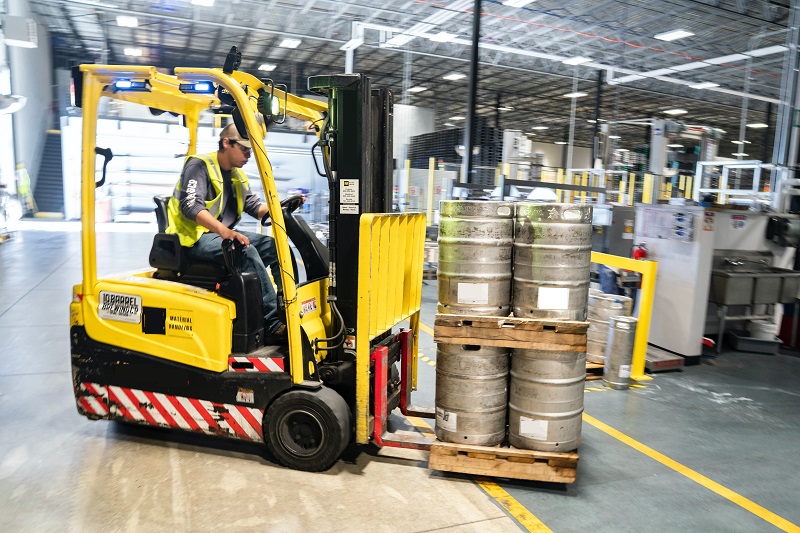Have you ever wondered why forklift breakdowns always seem to happen at the worst possible time? Are you struggling to figure out a consistent approach to keep your forklifts in top shape? If you’re keen to minimise costly repairs and prevent downtime, you’re in the right place. Forklift maintenance isn’t just about giving your machinery a quick once-over. It’s about following specific steps and checks to help your forklifts work at their peak while keeping everyone on site safe.
In this guide, we’ll look at why forklift maintenance is crucial, how often you should schedule it, and which parts deserve extra attention. We’ll cover everything from daily checklists to advanced adjustments like forklift governor adjustment. We’ll talk through common issues, such as propane forklift repair basics, and highlight when it’s time to contact an industry professional.
Table of Contents
Importance Of Regular Forklift Maintenance
Regular forklift maintenance is absolutely key for businesses that rely on heavy machinery. In addition to improving operational performance, it ensures a safer work environment for all employees. Malfunctioning brakes, faulty steering, or damaged hydraulics can easily lead to accidents, injuries, or expensive repairs if left unchecked.
Why Does Forklift Maintenance Matter For Safety And Performance?
A well-maintained forklift prevents sudden malfunctions, reduces the risk of serious workplace incidents, and prolongs the machine’s lifespan. On top of that, consistent upkeep can keep your operational expenses in check. When you spot minor issues early—like worn tyres—you have the chance to address them before they escalate into more costly problems. Moreover, smooth and efficient forklifts have a positive effect on overall warehouse productivity.
Identifying Key Forklift Parts To Inspect
Before diving into any forklift truck maintenance, it’s vital to know which components need the most attention. While every machine is different, certain parts tend to require regular inspection to keep everything running smoothly.
Tyres And Wheels
Tyres are critical for stability and manoeuvrability. Worn or under-inflated tyres can compromise the forklift’s handling and increase the chance of skidding. Regularly check tyre pressure, tread wear, and any visible damage like cracks. Promptly replace or repair tyres that show signs of balding or unusual wear patterns. A simple habit like checking tyre pressure daily can go a long way towards preventing unexpected blowouts.
Brakes And Steering Components
Another essential consideration in forklift maintenance is ensuring the brakes and steering are in top condition. Faulty brakes can lead to collisions, while unresponsive steering makes it challenging to navigate tight spaces. Pay close attention to brake pads, hydraulic fluid levels, and brake lines for any leaks. Steering pumps and gears should also be lubricated and inspected for noise or sluggish response. These checks can quickly reveal whether you need a professional service.
Step-By-Step Maintenance Forklift Guide
By following a clear set of steps, you can tackle maintenance forklift tasks confidently. Even if you’re new to forklift care, a simple outline will help you stay on the right track.
Pre-Maintenance Safety Precautions
Always power down the forklift and remove the key to prevent accidental starts. Clearly mark the work area with warning signs to keep colleagues informed. Wear protective gear, like gloves and safety glasses, especially when dealing with fluids or electrical components. Before you open any covers or remove any attachments, double-check that hydraulic systems are de-pressurised, lowering the risk of sudden movements.
Cleaning And Lubrication Tips
A well-cleaned forklift is easier to inspect for cracks, dents, or leaks. Use mild detergents that don’t damage paint or underlying components. Pay extra attention to pivot points, mast rails, and chains, since these areas often gather dirt. Regular lubrication of moving parts stops metal-on-metal friction and extends the life of your components. It also makes operations smoother, which is a big plus for the person driving the forklift each day.
How To Repair A Forklift: Common Issues And Solutions
Even with regular care, issues will eventually arise. Developing a firm grasp on how to repair a forklift can save time and money, but it’s equally critical to recognise when to call in a pro.
Diagnosing Common Forklift Faults
Start by conducting a visual check for loose cables, cracked hoses, or unusual fluid leaks. If you experience jerky movements, examine the hydraulic system for blockages and check fluid levels. For braking issues, look at the brake lines, fluid levels, and pedal feel. Engine-related troubles, such as poor acceleration, might be tied to clogged air filters or ignition problems in combustion models. By identifying the likely source of the fault, you can decide if it’s a quick fix or if additional forklift truck maintenance services are needed.
Quick Fixes Vs. Professional Repairs
Not all problems demand the help of a professional. Replacing a worn tyre or swapping out a dirty filter is usually straightforward. On the other hand, advanced problems like forklift governor adjustment or complicated electrical issues might require specialised tools and knowledge. Attempting these yourself could lead to further damage or even compromise operator safety. Balancing in-house fixes with professional forklift services ensures you tackle the right issues on your own while leaving the more intricate tasks to a seasoned technician.
Preventative Measures And Long-Term Care
Preventative steps are just as important as quick fixes. By focusing on long-term care, you stand a better chance of reducing costly breakdowns and keeping your forklifts in prime condition.
Training Operators For Better Forklift Truck Maintenance
Operators can be your first line of defence against major repairs. With proper training, drivers know how to spot unusual noises, slight performance dips, or dashboard warnings. They can take immediate action, such as reporting issues or stopping the machine if a serious fault arises. On top of that, well-trained drivers minimise wear and tear by operating the forklift parts calmly and avoiding overloading.
Setting Up A Maintenance Schedule To Reduce Downtime
A planned schedule can help you avoid last-minute emergencies. Consider using a maintenance log that details every check and repair. If multiple forklifts operate in your warehouse, stagger maintenance dates so that not all machines are out of action at once. This ensures continuous productivity, as there’s always at least one working forklift available. Plus, with a consistent schedule, you often spot small problems before they escalate.
Conclusion
Summing up, a robust forklift maintenance routine impacts far more than just your operating costs. It keeps your team safe, ensures that daily tasks run smoothly, and helps maintain your equipment’s best possible performance. By focusing on regular checklists, specific attention to vital parts, and targeted training for your operators, you set up a steady system that minimises unexpected breakdowns.

